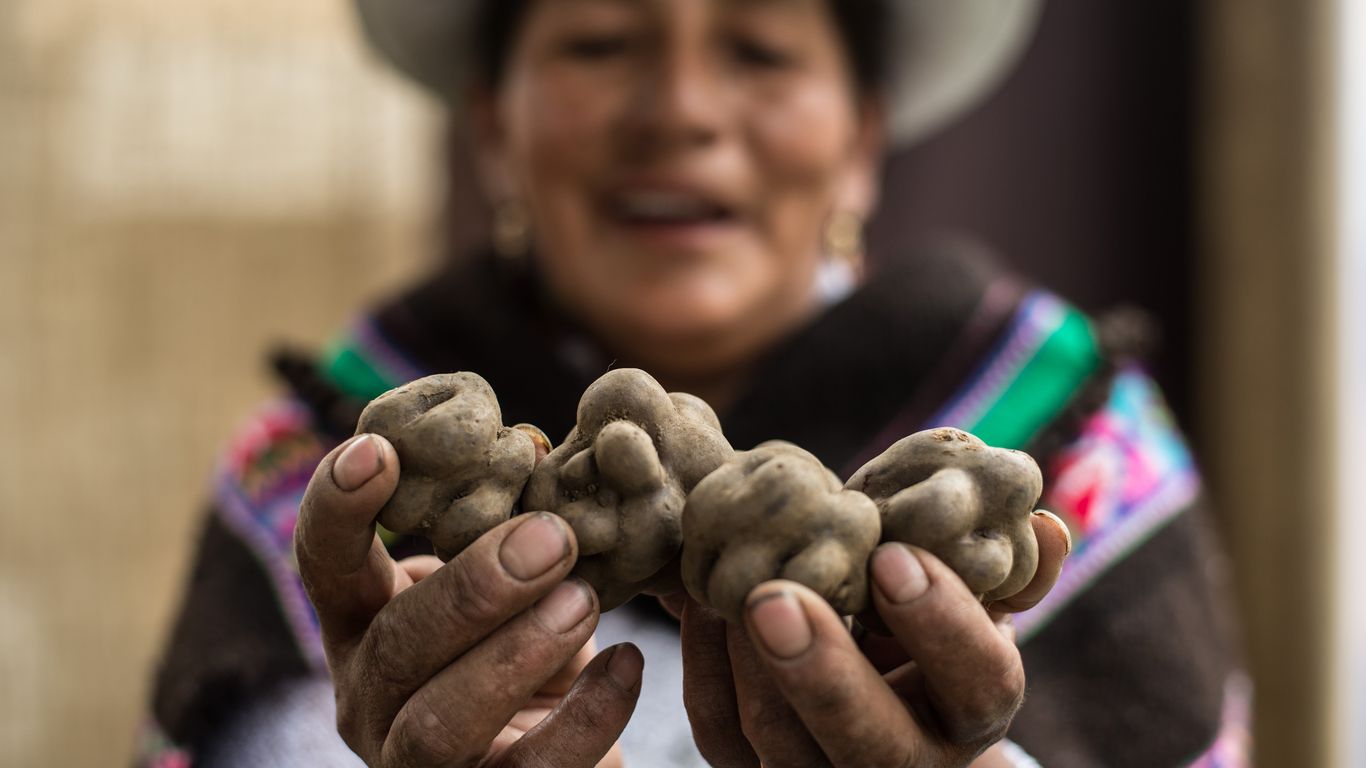
Potato, potahtoh. Tomato, tomahtoh. It’s a debate we owe to Peru, the third-largest country in South America, which gave the world its native potatoes and tomatoes among other foods.
Why it matters: Ancient Peruvians developed and planted thousands of crops, including quinoa, tomatoes, corn and potatoes — which are only indigenous to the Andes in South America. The Spanish then exported these crops around the world at a time when famine was common from Europe to Russia. Smithsonian Magazine credits Peru's potatoes with making the rise of the West possible.
History: The Spanish, led by conquistador Francisco Pizarro, first arrived in Peru in 1526.
- When Pizarro and his men came in contact with the Inca Empire, around 40,000 Incas governed a territory of 10 million subjects who spoke more than 30 different languages.
- Peru ultimately gained its independence from Spanish rule in July 1821.
Although Peruvian food only recently has gained tremendous popularity around the world, the country has been feeding the world for centuries.
- Peru has more than 4,000 types of potatoes. Historian Rebecca Earle refers to the tuber as the "world's most successful immigrant," since producers and consumers around the world claim it as their own.
- The exportation of the potato led the way to modern agriculture. As it was carried across the Atlantic, the world's first fertilizer, Peruvian guano, went with it, per the Smithsonian Magazine.
- Of note: Some researchers believe that the potato's arrival to northern Europe ended famine, per the Smithsonian.
Besides potatoes, Peruvian staples include quinoa, maca (a plant mainly consumed as a powder), lucuma (a fruit that once referred as the Gold of the Incas) and kiwicha (known as amaranth) — all of which today are considered "superfoods" for their health benefits.
- While meats were introduced by the Spaniards, Incas would freeze-dry it, calling it ch'arki (meaning "to burn meat"), which led to the English word for the meat commonly found in convenience stores worldwide: beef jerky.
Zoom in: Peru encompasses a variety of climates, from mountains to jungles to coastlines. Each region offers culinary diversity within Peruvian cuisine.
- In the Andes, meals revolve around corn, potatoes and other tubers, along with meats like alpaca and guinea pig (known as cuy in the country).
- In the Amazon, fish is a staple, and dishes often include fruit like pitahaya (dragon fruit), guava, maracuya (sour dragon fruit), cacao pods (which contain cacao beans) or cocona (a tomato found in the Amazon).
- Along Peru's coast, the most famous dish is ceviche — a raw fish with onions and peppers marinated in lime juice — served with sweet potatoes and fried corn.
The bottom line: Peru's cuisine is considered the "original fusion food," as it adapted the foods of different cultures and nationalities, including Spanish colonizers, enslaved Africans, Chinese laborers and Italian settlers, as they arrived.
Get more news that matters about Latinos in the hemisphere, delivered right to your inbox on Tuesdays and Thursdays. Sign up for the Axios Latino newsletter.
"world" - Google News
September 17, 2021 at 12:25AM
https://ift.tt/3kg4xP4
Hispanic Heritage Month: Peru feeds the world - Axios
"world" - Google News
https://ift.tt/3d80zBJ
https://ift.tt/2WkdbyX
Bagikan Berita Ini














0 Response to "Hispanic Heritage Month: Peru feeds the world - Axios"
Post a Comment